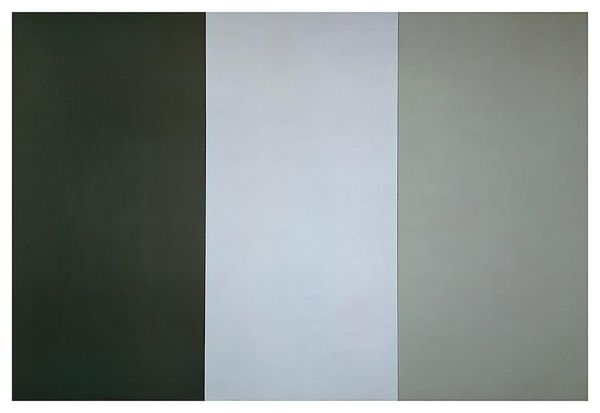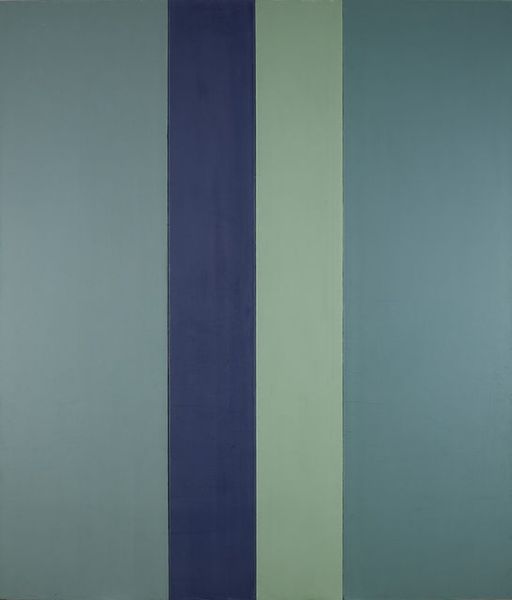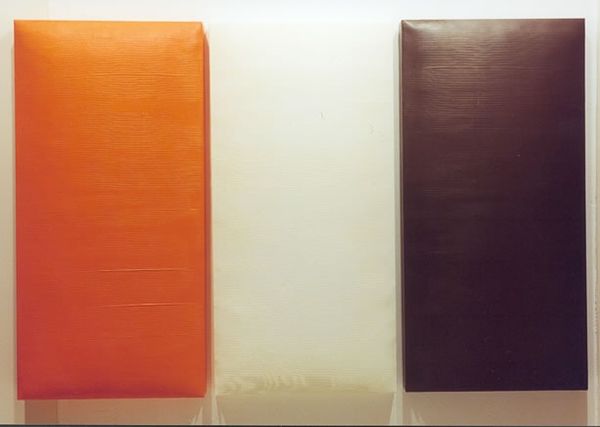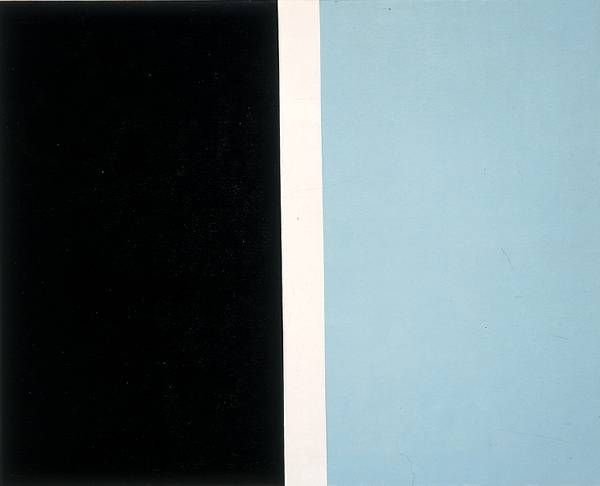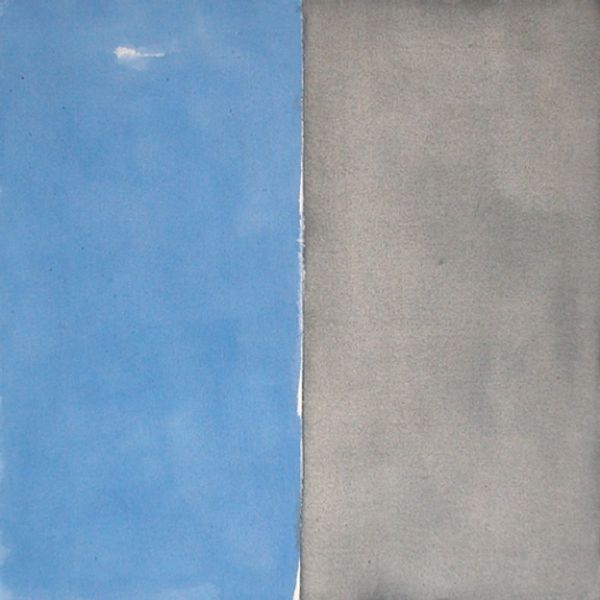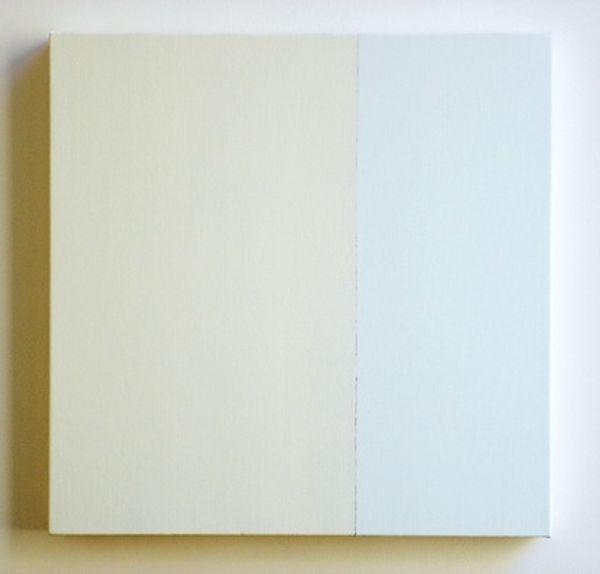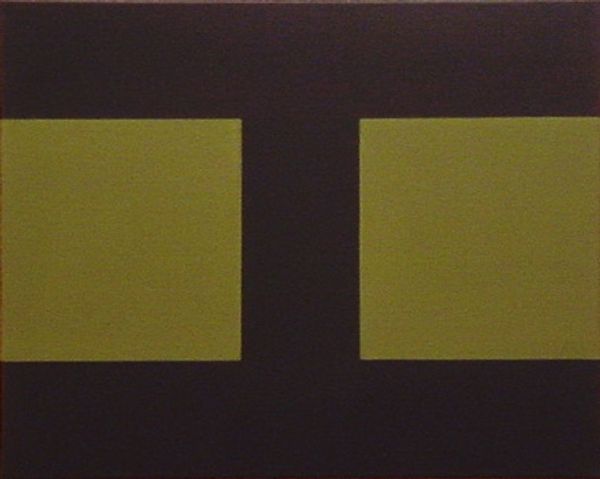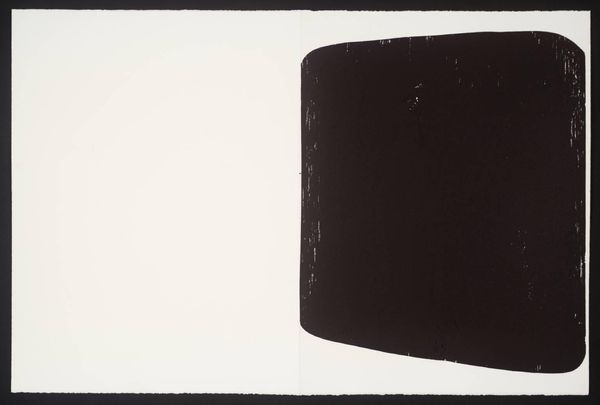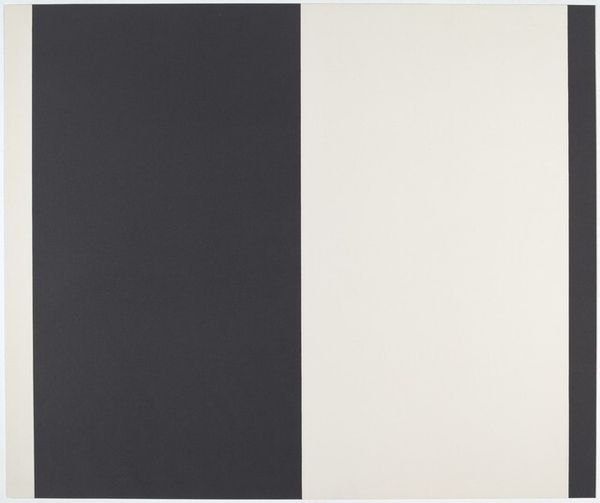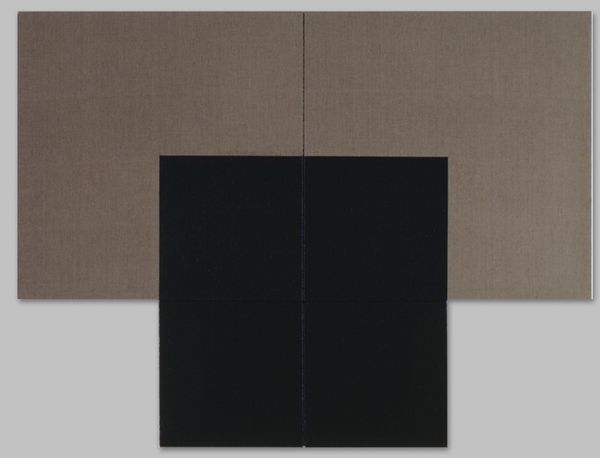
acrylic-paint
#
abstract-expressionism
#
colour-field-painting
#
acrylic-paint
#
form
#
abstraction
#
line
Copyright: Robert Huot,Fair Use
Editor: So, here we have Robert Huot's "T's China," painted in 1966 using acrylic. It's deceptively simple, just black and white rectangles with a thin vertical line in between… Almost feels like looking through a doorway into nothingness. What strikes you most when you look at it? Curator: It whispers of reduction, doesn't it? A kind of deliberate paring-down. It makes me think of Mondrian, but emptied of all that architectural precision. Instead, there's this wonderfully hesitant quality, almost like a stage set waiting for actors that never arrive. Notice how that slightly-off-center green line kind of *trembles*. It's not quite sure if it should be there. Editor: That tremor… It gives it this vulnerable, very human feeling, in contrast with the stark geometry. Why "T's China" though? It seems so disconnected from the image. Curator: Ah, titles. Often they are a map to a place we can’t physically see, or feel, ourselves! Could the "T" be a meeting point, a crossroads? Or maybe the "China" isn't literal at all, but a suggestion of the unknown, the unexplored – the kind of potential that exists between those bold shapes, or the name of the brand of paint, you never know...Does it alter your perspective knowing this was painted during a really intense period of cultural and political upheaval? Editor: Definitely. The "unknown" aspect makes a lot of sense, in that context. It becomes less about clean lines and more about the tensions between them, all the possibilities held in suspension. Curator: Exactly. It’s a meditation on potential, perhaps, or the silent dialogue that happens before anything tangible comes into being. Beautiful isn't it? Editor: It is. I’ll definitely see it differently now, less about emptiness and more about anticipation. Thanks!
Comments
No comments
Be the first to comment and join the conversation on the ultimate creative platform.
